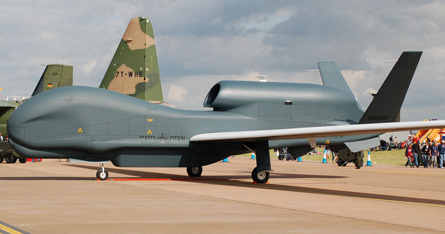Northrop Grumman is confident it can work around tight export controls on its unmanned air vehicle technology to exploit the burgeoning market for aerial survelliance in Asia and the Middle East.
The US manufacturer says allowing potential customers to design and fit their own payloads for UAVs such as the RQ-4 Global Hawk and MQ-8 Firescout is key to selling the aircraft to the likes of Japan, South Korea and the Gulf Cooperation Council states, where rising external threats are generating a need for long-endurance UAVs.
 |
|---|
© Craig Hoyle/Flight InternationalThere is a growing need for long-endurance UAVs like the RQ-4 Global Hawk |
Northrop's strategy mirrors the approach taken with EADS on the Eurohawk venture, which will deliver five high-altitude long-endurance Global Hawks modified to perform signals intelligence duties for Germany.
"Eurohawk is our model going forward," says Gene Fraser, vice-president and deputy of Northrop's strike and surveillance systems division. "Global Hawk becomes the system to get the payloads where they need to be. We would export the system government-to-government, and are working with industry to integrate an indigenous payload."
Fraser says the affordability of the Global Hawk is not an issue in Japan, noting: "It is well within their budget capability." Middle Eastern nations too are likely to increase their spend on UAVs to counter a potential threat from Iran and domestic terrorism.
Speaking at the Shephard UV Europe conference in Newport, Wales, last week, Fraser outlined the need to create a "fully networked environment" to "get the best out of UAVs and their payload".The UAV community must "move to the next level of unmanned", he says, outlining a scenario where UAVs, working with manned and unmanned seaborne assets, could be used to combat piracy off the Horn of Africa.
Source: Flight International























